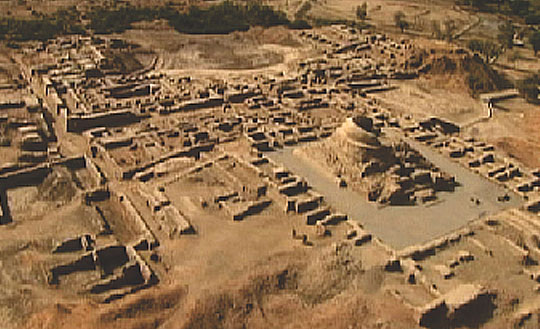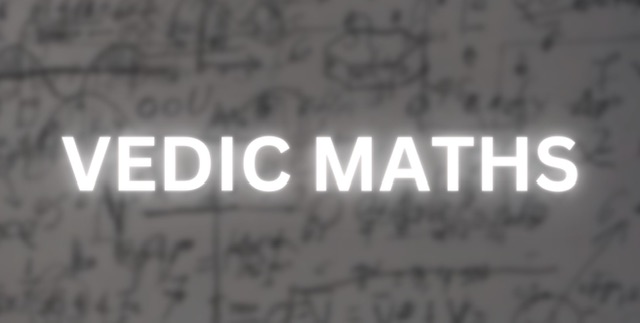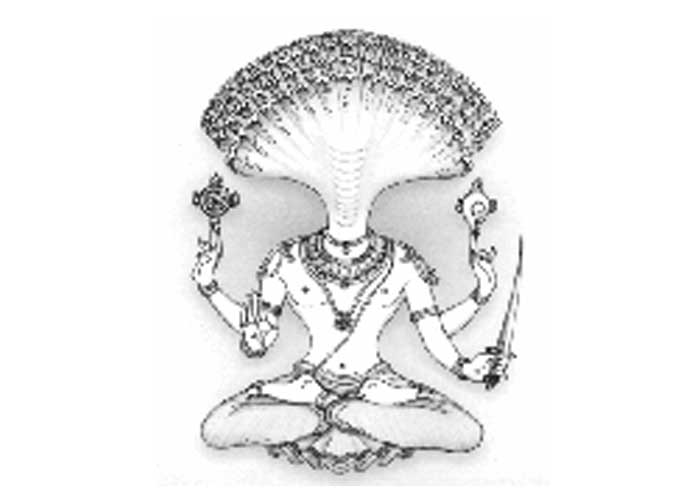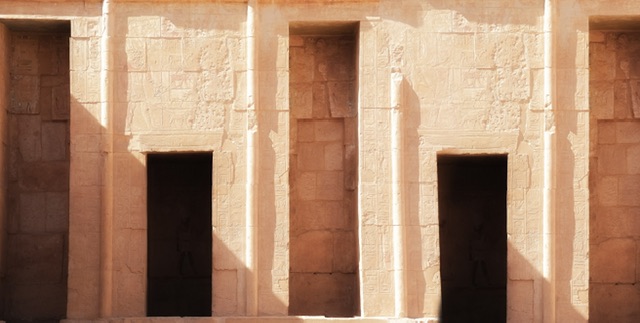How ancient is the vedic culture and how did it begin? Was it the creation of a group of people who invaded India from outside, as many scholars believed for centuries? Or did it arise among indigenous people of India? It is answers to such questions which will give us a fair idea about our origin and how far back in time, history of our culture spans and that’s the reason why the studies on Vedic Culture, its origins, nature, developmental processes and continuity have engaged the attention of several scholars since long with the result that the number of research publications on these topics, now runs into thousands.
In the last decade itself several significant contributions to the field of vedic historical studies have come to light, for example, Shrikant G. Talageri’s ‘The Rigved: A Historical Analysis’ (2000), Michel Danino and Sujata Nahar’s ‘The Invasion That Never Was’ (2000), S.Kalyanaraman’s ‘Sarasvati’ (2000), Edvin Bryant’s ‘The Quest for the Origins of Vedic Culture’ (2001), David Frawley’s ‘The Rig Veda and the History of India’ (2001), and B.B. Lal’s ‘The Sarasvati Flows On’ (2002), etc. But unfortunately, despite so much literature many myths about the vedic culture still exist which must be dispelled before we can get an accurate picture of arguably the most ancient civilization on the planet.
Myth 1: ‘There was an Aryan Invasion of India’
A popular theory called the Aryan Invasion Theory (taught in Ancient History classes back in school to me as the most accepted theory) was around 1500 BC, people who were referred to as ‘Aryans’ gradually infiltrated the Indian subcontinent. This theory perpetuated the notion that the authors of the vedic culture were not indigenous to this land but had arrived here from somewhere outside as invaders in about 1500 BC. While the place of their original habitat continued to be debated, the image of the early Vedic Aryans as a culturally backward but physically vigorous and bellicose people soon found general acceptance. By the time the Indus Valley Civilization, now known as the Harappan or Indus-Saraswati Civilization, was discovered, the image of the ‘barbarous invading Aryans’ had turned into an article of faith and therefore, it was readily accepted that these very invading people destroyed the Indus valley civilization, the earliest civilization of South Asia. It was said that they were nomadic pastoralists not doing even agriculture but, being extremely war like and possessing horses and horse-drawn chariots, that provided them superior maneuverability in battles, they succeeded in destroying the Harappan cities and forcing their inhabitants, the Dravidians to move to the south. And surprisingly this theory was believed to be true, by a large number of scholars of the late nineteenth and early twentieth century, despite having almost no shred of evidence to support it.
Eminent anthropologist Kenneth Kennedy in “Have Aryans Been Identified in the Prehistoric Skeletal Record from South Asia” appearing in The Indo-Aryans of South Asia (Walter de Gruyter, 1995) writes that no Aryan skeletons have been found in the Indus valley that differ from the skeletons of indigenous ethnic groups. “All prehistoric human remains recovered from the Indian subcontinent are phenotypically identifiable as South Asians. Furthermore their biological continuity with living peoples of India, Pakistan, Sri Lanka and the border regions is well established across time and space.”
Professor Colin Renfrew, formerly professor of archaeology at Cambridge University, in his famous work, Archeology and Language: The Puzzle of Indo-European Origins, (Cambridge Univ. Press, 1988) comments “As far as I can see there is nothing in the Hymns of the Rigveda which demonstrates that the Vedic-speaking population were intrusive to the area: this comes rather from a historical assumption about the ‘coming’ of the Indo-Europeans. There is no internal evidence from the ancient Vedic literature that Vedic civilization originated outside India. The verses of the Rigveda, detail many aspects of daily life of the people. There is no hint in this vast literature of a migration or of a history that lies in a homeland beyond the mountains of northern India.”
Thus, evidence from anthropology, archaeology and vedic literature indicate that vedic civilization was indigenous to India, contrary to the “Aryan Invasion Theory” and it would not be wrong to say that this explanation of our origins was one of the biggest myths taught to us back in school.
Prof. Shivaji Singh, former Head of the Department of Ancient History, Archaeology and Culture, University of Gorakhpur in “VEDIC CULTURE AND ITS CONTINUITY: NEW PARADIGM AND DIMENSIONS” thus rightly states, “For the last over a century and a half, scholars concerned with Vedic historical studies have remained under the spell of what is called the Aryan Invasion Theory (AIT). Though the spell has broken recently its hangover still continues and it might take some more time to be completely cleared off. It was indeed a period of spell, for otherwise it is difficult to understand why during such a long span of time scholars, who normally maintain a distinction between a theory and a fact, not only overlooked this important epistemological difference but even accepted this theory as a Gospel Truth that cannot be doubted or challenged…The notion of a culturally backward, nomadic and tribal Aryans has persisted till now and contradicted only recently.”
In fact there is growing evidence that the Harappan or Indus valley civilization or Indus-Saraswati civilization was indeed the vedic civilization. As he further states that, “During the last few years efforts for understanding the genesis and historical process of Vedic Culture has begun anew because of a major shift in paradigm, that has occurred due to the availability of a harvest of new archaeological as well as literary data and other scientific information relating to this ancient culture. In earlier models, the Vedic and Harappan cultures were taken to be two totally different cultures. Most of the scholars believed that while the former was Aryan, the latter was non-Aryan (Dravidian). The Vedic Culture was supposed to be chronologically later than, and qualitatively inferior to, the Harappan Civilization. The Vedic Culture was not accorded even the status of a ‘civilization’ since by definition, the culture of an urbanized and literate society alone could be designated as ‘civilization’, and the Vedic people were presumed to be Illiterate, village, folk, ignorant of city life. So powerful was the hold of the earlier paradigm that a prestigious UNESCO publication, History of Mankind, labeled the Aryans as ‘non-urbanized people and semi-barbarous’ who destroyed the non-Aryans Harappan Civilization (Hawkes and Wooley 1963, 406). But, now the perceptive is totally changed. The Vedic-Harappan dichotomy is being rejected with accumulating evidence that point to the contrary and establish their identity.”
Myth 2: ‘Vedic people were a nomadic tribe’
Unlike nomads, the vedic people lived a settled life and even constructed forts. In RV 10.101.8 the devotee’s prayer is: ‘[O gods] make strong forts as of metal, safe from assailants (purahkrinadhvamayasi-radhrista). RV 4.30.20 refers to ‘a hundred fortresses of stone’. Sometimes these had a hundred arms (RV 7.15.14: purbhava-satabhujih). The vedic people carried on trade, not merely on land but also across the sea. RV 9.33.6 states: ‘From every side, O Soma, for our profit, pour thou forth four seas filled with a thousand-fold riches (rayah samudranchaturo asmabhyam soma visvatah. Apavasva sahasrinah)’. Further, the ships used in sea-trade were not petty ones but could be as large as having a hundred oars (sataritra, RV.116.5).
Even on the political and administrative fronts, the vedic people were highly organized. Not only did they have sabhas and samitis which dealt with legislative and perhaps judiciary matters, but they also had a well-established hierarchy amongst the rulers, viz. samrat, rajan and rajaka. Thus, in RV 6.27.8 Abhyavarti Chayamana is stated to be a Samrat (Sovereign), while RV 8.21.8 states that, dwelling beside the Sarasvati river, Chitra alone is the Rajan (king) while the rest are mere Rajakas (kinglings or petty chieftains). That these gradations were absolutely real is duly confirmed by the Satapatha Brahmana (V.1.1.12-13), which says: ‘By offering the Rajasuya he becomes Raja and by the Vajapeya he becomes Samrat, and the office of the Rajan is lower and that of the Samraj, the higher (raja vai rajasuyenestva bhavati, samrat vajapeyena l avaram hi rajyam param samrajyam).
References:
VEDIC CULTURE AND ITS CONTINUITY: NEW PARADIGM AND DIMENSIONS- Prof. Shivaji Singh, Former Head of the Dept. of Ancient History, Archaeology and Culture, University of Gorakhpur.
Why Perpetuate Myths? A Fresh Lookat Ancient Indian History- B. B. Lal, renowned expert in Indian archaeology. He was the Director General of the Archaeological Survey of India from 1968 to 1972, and has served as President of the World Archaeological Congress. He also worked in for UNESCO committees. He received the Padma Bhushan by the Government of India in 2000.
Origins of Vedic Civilization- Kenneth Chandler, Ph.D.
Indus Valley 2,000 years older than thought- Hindustan Times, November 04, 2012 http://www.hindustantimes.com/India-news/NewDelhi/Indus-Valley-2-000-years-older-than-thought/Article1-954601.aspx






Very useful information removing many misconceptions. Its surprising that we never hear such true historical facts but always hear about motivated falsehood, myths created by interested people.. Innerworld is a very very informative and unique publication.